-
 Bitcoin
Bitcoin $84,871.7534
-0.35% -
 Ethereum
Ethereum $1,619.4309
-1.12% -
 Tether USDt
Tether USDt $0.9995
-0.02% -
 XRP
XRP $2.1431
-0.53% -
 BNB
BNB $585.8720
-1.63% -
 Solana
Solana $130.5534
-1.62% -
 USDC
USDC $0.9998
-0.02% -
 Dogecoin
Dogecoin $0.1658
-0.71% -
 TRON
TRON $0.2554
3.89% -
 Cardano
Cardano $0.6462
-1.82% -
 UNUS SED LEO
UNUS SED LEO $9.4169
0.83% -
 Chainlink
Chainlink $12.8305
-2.26% -
 Avalanche
Avalanche $19.9412
-2.54% -
 Stellar
Stellar $0.2411
-1.64% -
 Sui
Sui $2.2681
-2.91% -
 Shiba Inu
Shiba Inu $0.0...01222
-2.16% -
 Hedera
Hedera $0.1675
-4.48% -
 Toncoin
Toncoin $2.8369
-4.71% -
 Bitcoin Cash
Bitcoin Cash $350.1684
2.22% -
 Litecoin
Litecoin $78.7554
0.37% -
 Polkadot
Polkadot $3.7209
0.17% -
 Dai
Dai $1.0000
-0.02% -
 Hyperliquid
Hyperliquid $15.6087
-5.86% -
 Bitget Token
Bitget Token $4.3141
-1.86% -
 Pi
Pi $0.7445
2.13% -
 Ethena USDe
Ethena USDe $0.9989
-0.02% -
 Monero
Monero $204.7026
-1.86% -
 Uniswap
Uniswap $5.4145
-1.33% -
 OKB
OKB $53.2886
-2.02% -
 Pepe
Pepe $0.0...07493
1.62%
Is blockchain like a public ledger that anyone can read?
Blockchain is a public ledger that anyone can read, ensuring transparency while maintaining privacy through cryptographic means.
Apr 12, 2025 at 03:49 pm
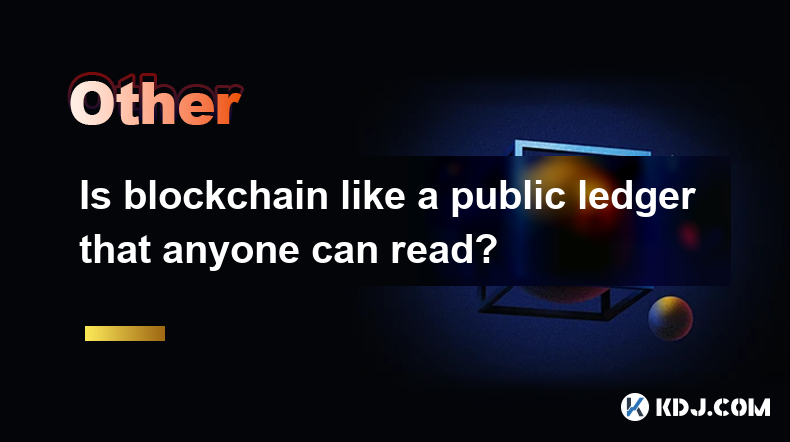
Is blockchain like a public ledger that anyone can read?
Blockchain technology, at its core, is indeed often described as a public ledger that can be read by anyone. This concept is fundamental to understanding how cryptocurrencies like Bitcoin and Ethereum function. In this article, we will delve into the specifics of blockchain as a public ledger, how it works, and the implications of its transparency.
Understanding Blockchain as a Public Ledger
The term public ledger refers to a record-keeping system where transactions are recorded in a way that is accessible to the public. In the context of blockchain, this ledger is maintained across a network of computers, making it decentralized and distributed. Each block in the blockchain contains a list of transactions, and once a block is added to the chain, it cannot be altered, ensuring the integrity of the data.
How Blockchain Ensures Transparency
Transparency is one of the key features of blockchain technology. Every transaction that occurs on the blockchain is recorded on a publicly accessible database. This means that anyone can view the transactions, but the identities of the individuals involved are often protected by cryptographic means. For example, Bitcoin transactions are visible on the Bitcoin blockchain, but the parties involved are identified only by their public addresses, which are pseudonymous.
Accessing the Public Ledger
To access the public ledger of a blockchain, users typically need to use a blockchain explorer. These are online tools that allow users to browse the blockchain and view transaction details. Here is how you can access a blockchain using a blockchain explorer:
- Choose a Blockchain Explorer: Depending on the cryptocurrency you are interested in, you can use different explorers. For Bitcoin, you might use Blockchain.com or BlockCypher. For Ethereum, Etherscan is a popular choice.
- Enter the Transaction Hash or Address: Once on the explorer, you can enter a transaction hash or a public address to view specific details.
- View Transaction Details: The explorer will display the transaction details, including the amount transferred, the timestamp, and the sender and recipient addresses.
Privacy and Anonymity on the Blockchain
While the blockchain is public, privacy and anonymity are still maintained to a certain extent. The use of public and private keys ensures that while transactions are visible, the real-world identities of the parties involved are not directly linked to the transactions. However, advanced techniques like blockchain analytics can sometimes be used to trace transactions back to individuals, especially if they are linked to known addresses.
Security and Immutability of the Public Ledger
The security and immutability of the blockchain are crucial to its function as a public ledger. Once a transaction is recorded on the blockchain, it is extremely difficult to alter. This is achieved through cryptographic hashing and a consensus mechanism like Proof of Work (PoW) or Proof of Stake (PoS). These mechanisms ensure that any attempt to alter a transaction would require an impractical amount of computational power, making the blockchain secure and reliable.
Implications of a Public Ledger in Cryptocurrency
The public nature of the blockchain has significant implications for cryptocurrencies. Transparency ensures that all participants in the network can trust the system, as they can independently verify transactions. This is particularly important for decentralized finance (DeFi) applications, where trustless systems are paramount. Additionally, the public ledger can be used for auditing and compliance, as regulators and auditors can access the blockchain to verify transactions and ensure adherence to regulations.
Use Cases Beyond Cryptocurrencies
While the public ledger aspect of blockchain is most commonly associated with cryptocurrencies, it has broader applications. For instance, supply chain management can benefit from the transparency of blockchain, allowing all parties to track the movement of goods. Similarly, voting systems can leverage the immutability of blockchain to ensure the integrity of election results.
Frequently Asked Questions
Q: Can I access the blockchain without any special software?
A: Yes, you can access the blockchain using a blockchain explorer, which is a web-based tool that does not require any special software. Simply visit the website of a blockchain explorer and enter the transaction hash or address you want to view.
Q: Is it possible to completely hide my transactions on the blockchain?
A: While the blockchain is public, some cryptocurrencies like Monero and Zcash offer enhanced privacy features that can hide transaction details. However, these features are specific to those cryptocurrencies and not available on all blockchains.
Q: How does the public nature of the blockchain affect its scalability?
A: The public nature of the blockchain can impact its scalability, as every node on the network needs to process and store every transaction. This can lead to slower transaction times and higher costs. Solutions like sharding and layer-2 scaling are being developed to address these issues.
Q: Are there any risks associated with the public ledger of the blockchain?
A: Yes, while the public ledger ensures transparency, it also poses risks such as privacy concerns and the potential for transaction data to be analyzed and linked to real-world identities. Users must be aware of these risks and take steps to protect their privacy, such as using different addresses for different transactions.
Disclaimer:info@kdj.com
The information provided is not trading advice. kdj.com does not assume any responsibility for any investments made based on the information provided in this article. Cryptocurrencies are highly volatile and it is highly recommended that you invest with caution after thorough research!
If you believe that the content used on this website infringes your copyright, please contact us immediately (info@kdj.com) and we will delete it promptly.
- The Mantra Team Has Addressed the Crypto Community Following the Mantra (OM) Token Price Crash
- 2025-04-14 08:35:13
- 5 Crypto Gems That Could Explode in Value
- 2025-04-14 08:35:13
- BlockDAG Capitalizes on Market Uncertainty as Cardano (ADA) and Toncoin (TON) Stumble
- 2025-04-14 08:30:13
- BlockDAG (BDAG) Is Shaping Up to Be One of the Most Talked-About New Crypto Projects
- 2025-04-14 08:30:13
- CryptoPunks NFT Trader "Wilcox" Faces 6-Year Jail Term After Avoiding Taxes on $13M in Income
- 2025-04-14 08:25:12
- The price of OM, the native token of the Mantra blockchain, dropped over 90% within 24 hours
- 2025-04-14 08:25:12
Related knowledge
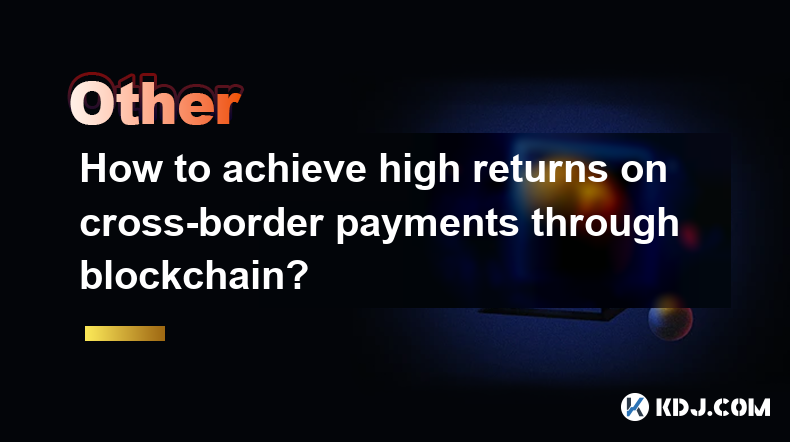
How to achieve high returns on cross-border payments through blockchain?
Apr 12,2025 at 05:57pm
How to Achieve High Returns on Cross-Border Payments Through Blockchain? Cross-border payments have traditionally been plagued by high fees, slow processing times, and a lack of transparency. However, the advent of blockchain technology offers a promising solution to these issues, potentially allowing for high returns on such transactions. Blockchain te...
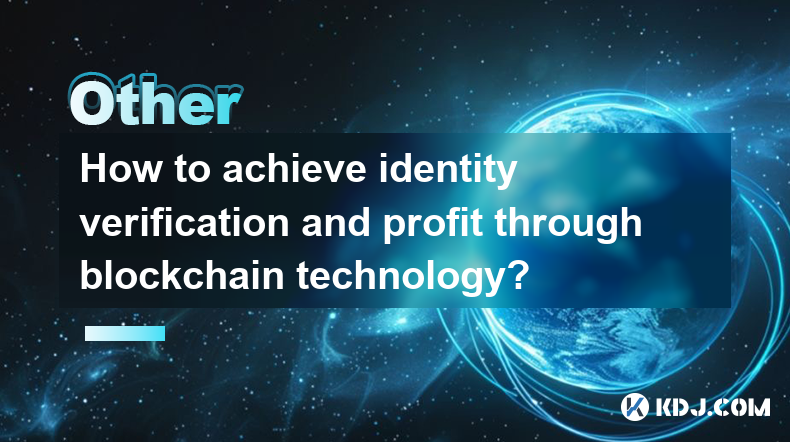
How to achieve identity verification and profit through blockchain technology?
Apr 12,2025 at 10:35pm
Achieving identity verification and profit through blockchain technology involves understanding the underlying principles of blockchain, exploring specific applications that facilitate identity verification, and leveraging these technologies to generate profit. This article will delve into these aspects, providing a comprehensive guide on how to navigat...

How to achieve passive income through blockchain?
Apr 13,2025 at 09:00pm
Achieving passive income through blockchain technology has become an increasingly popular strategy among cryptocurrency enthusiasts and investors. Blockchain technology offers a decentralized platform that can be utilized to generate income with minimal ongoing effort. This article will explore various methods through which you can achieve passive incom...
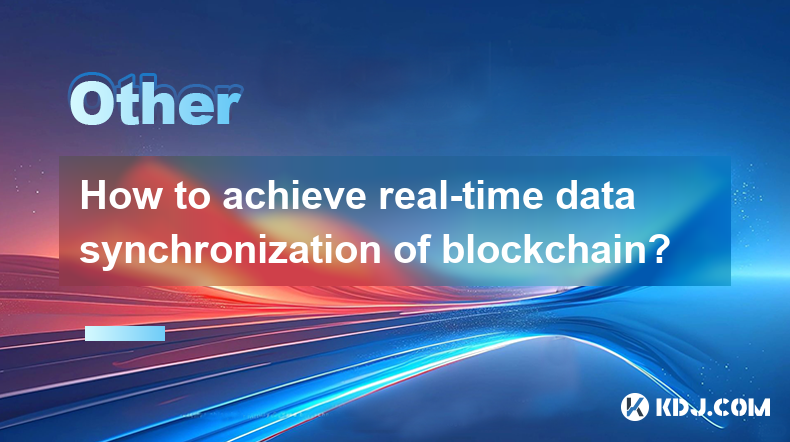
How to achieve real-time data synchronization of blockchain?
Apr 14,2025 at 06:57am
Achieving real-time data synchronization in blockchain is crucial for ensuring that all participants in the network have access to the most up-to-date information. This process involves multiple steps and technologies to ensure that data is transmitted and validated quickly and accurately across the network. In this article, we will explore the methods ...

How to achieve true ownership of virtual assets in blockchain games?
Apr 13,2025 at 03:35pm
Achieving true ownership of virtual assets in blockchain games is a topic that has garnered significant attention within the cryptocurrency community. The promise of blockchain technology lies in its ability to provide verifiable ownership and control over digital assets, which is particularly appealing in the gaming sector where players seek to own, tr...
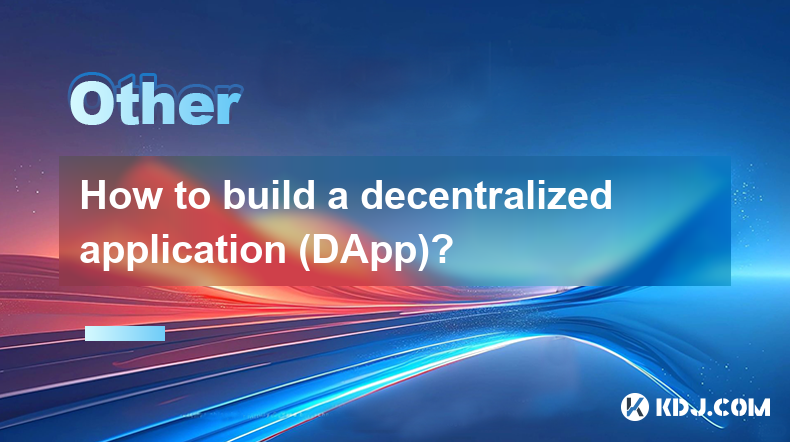
How to build a decentralized application (DApp)?
Apr 14,2025 at 01:01am
Building a decentralized application (DApp) involves several key steps and considerations that are crucial for ensuring the application's functionality, security, and decentralization. This guide will walk you through the process of creating a DApp, from conceptualization to deployment. Understanding the Basics of DAppsBefore diving into the development...

How to achieve high returns on cross-border payments through blockchain?
Apr 12,2025 at 05:57pm
How to Achieve High Returns on Cross-Border Payments Through Blockchain? Cross-border payments have traditionally been plagued by high fees, slow processing times, and a lack of transparency. However, the advent of blockchain technology offers a promising solution to these issues, potentially allowing for high returns on such transactions. Blockchain te...

How to achieve identity verification and profit through blockchain technology?
Apr 12,2025 at 10:35pm
Achieving identity verification and profit through blockchain technology involves understanding the underlying principles of blockchain, exploring specific applications that facilitate identity verification, and leveraging these technologies to generate profit. This article will delve into these aspects, providing a comprehensive guide on how to navigat...

How to achieve passive income through blockchain?
Apr 13,2025 at 09:00pm
Achieving passive income through blockchain technology has become an increasingly popular strategy among cryptocurrency enthusiasts and investors. Blockchain technology offers a decentralized platform that can be utilized to generate income with minimal ongoing effort. This article will explore various methods through which you can achieve passive incom...

How to achieve real-time data synchronization of blockchain?
Apr 14,2025 at 06:57am
Achieving real-time data synchronization in blockchain is crucial for ensuring that all participants in the network have access to the most up-to-date information. This process involves multiple steps and technologies to ensure that data is transmitted and validated quickly and accurately across the network. In this article, we will explore the methods ...

How to achieve true ownership of virtual assets in blockchain games?
Apr 13,2025 at 03:35pm
Achieving true ownership of virtual assets in blockchain games is a topic that has garnered significant attention within the cryptocurrency community. The promise of blockchain technology lies in its ability to provide verifiable ownership and control over digital assets, which is particularly appealing in the gaming sector where players seek to own, tr...

How to build a decentralized application (DApp)?
Apr 14,2025 at 01:01am
Building a decentralized application (DApp) involves several key steps and considerations that are crucial for ensuring the application's functionality, security, and decentralization. This guide will walk you through the process of creating a DApp, from conceptualization to deployment. Understanding the Basics of DAppsBefore diving into the development...
See all articles























































































